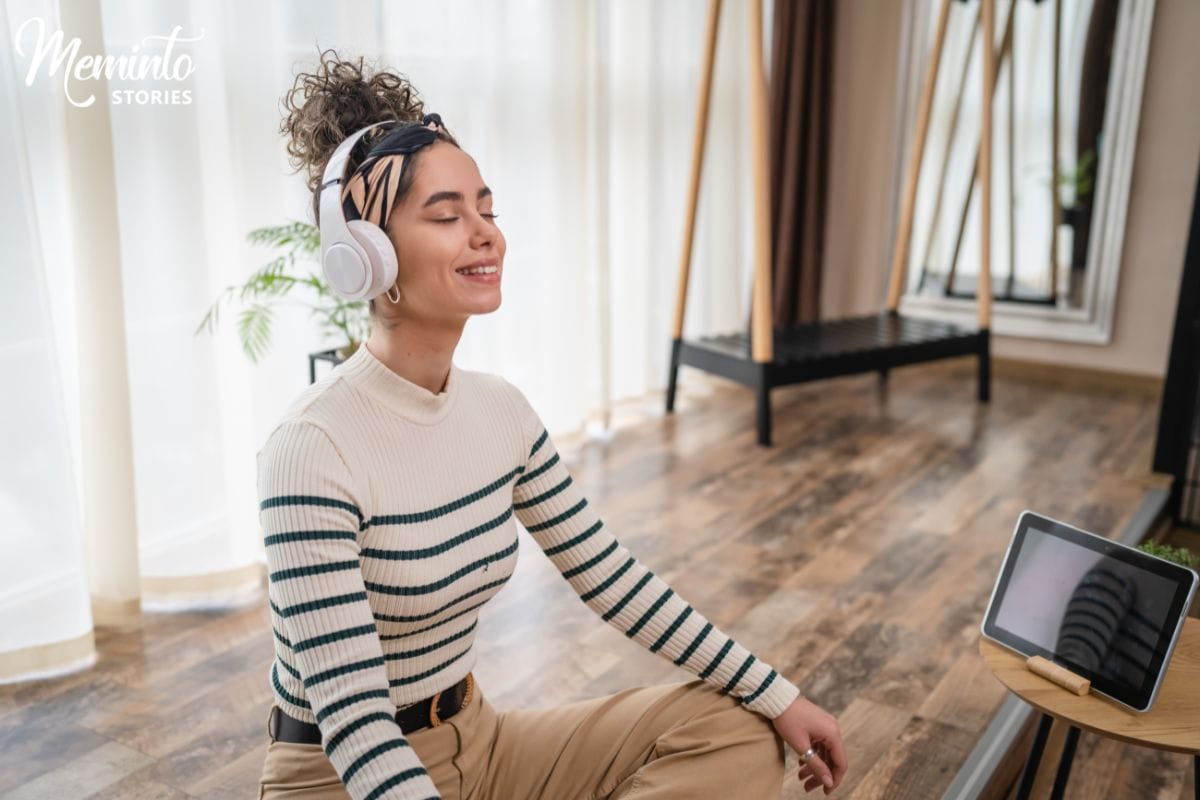Ever find yourself thinking, “I just need a weekend to catch my breath”, only to return on Monday more tired than before?
Life rarely slows down on its own. It’s easy to push self-care to the bottom of your list between work, family, and everything. You keep going because you have to, but sometimes you need time to pause and breathe.
That’s where retreats come in. Not as a luxury. But as a promise to yourself. A line in the calendar that says: You matter, too. It’s a way to remove the noise and check in with yourself. Whether a quiet weekend away or a structured wellness retreat, it gives you space to rest, reflect, and realign with what matters.
In this guide, you’ll learn how to turn a yearly retreat into a meaningful self-care routine that nourishes you long after it ends.
🗝️ Key takeaways
- A weekend off may feel like enough, but lasting self-care needs more space, intention, and follow-through than just two rushed days can offer.
- Annual retreats help you slow down on purpose, reconnect with yourself, and reflect without distractions so you return to daily life with more clarity and calm.
- Planning your retreat around your current needs – whether solo, guided, or at home – makes the experience more meaningful and sustainable over time.
- Reflection turns a retreat into a long-term habit of self-awareness, especially when you pause to write down what shifted and what you want to carry forward.
- With Meminto’s Life Book, you can document your retreat journey in small, guided steps and create a lasting record of your growth and inner work.
Why self-care needs more than just a weekend off
You’ve probably said, “I just need a weekend to reset.” But by the time Sunday evening rolls around, you’re already dreading Monday. The laundry’s waiting, your inbox is full, and that two-day break barely scratched the surface.
Most of us are running on low reserves, and a rushed weekend off isn’t enough to refill the tank. Real self-care needs more space. It requires intention, boundaries, and time to slow down, not just pause and sprint again.
That’s where a retreat is different.
- It’s not squeezed into a packed weekend
- It’s not another item on your to-do list
- It gives your body and mind time to decompress
- It creates distance from routine so you can see your life with a fresh perspective.
When you make space for something longer and deeper, you allow yourself to reconnect with who you are beyond the busyness. And the more consistently you do that, the easier it becomes to carry that calm into your everyday life.
A retreat doesn’t replace your weekend rest. It deepens it. It teaches your mind and body how to slow down on purpose, not just recover on the edge of burnout.
For ideas on creating a more meaningful self-care experience, consider reading 20+ Retirement Gift Ideas for Dad, which includes wellness gifts that promote relaxation and well-being.
What is a self-care retreat?
A self-care retreat is more than just taking time off. It’s a deliberate break from your daily routine to focus on your mental, emotional, and physical well-being. While a vacation might be about sightseeing or relaxing, a retreat is about reconnecting with yourself.
You don’t need to travel far or spend a lot to make it meaningful. A retreat can be a weekend in nature, a guided wellness experience, or even a quiet day spent alone at home with your phone on silent and your calendar cleared.
The key difference is intention. You’re not just stepping away from work or responsibility. You’re making space to reflect, recharge, and pay attention to your needs. That could mean rest, clarity, creativity, or simply breathing time.
Types of retreats to consider
Not every retreat needs to look the same. The right one depends on what you need most – rest, reflection, connection, or a bit of everything. Whether you go away or stay home, creating space to care for yourself with intention matters.
I have found that the type of retreat I need changes depending on my season of life. One year, I needed a quiet weekend in nature. Another time, I craved the structure and connection of a group experience. There is no one right way; only what serves you now.
As Viktoria from Switzerland shared after completing her Meminto Life Book with her son:
“Together with my son I have been able to record almost a century of history. We have created 16 books in German and seven in English. My family lives widely scattered. They were very happy.”
Another user, Ivy from Canada, created a Meminto book capturing her love story for her children. She said,
“Thanks to Meminto, we finally made the book we’ve always wanted to make!” and even filmed her kids’ joyful reactions.
That sense of shared meaning, which preserves your story while also creating space for others to connect with it, is at the heart of what a reflective retreat can offer.
Here are a few types of retreats to consider:
1. Solo retreats
If you need time to recharge without distraction, a solo retreat can offer quiet space for rest and reflection. It could be as simple as booking a cabin or setting aside a weekend at home. The goal is to disconnect from noise and reconnect with yourself.
2. Group or spiritual retreats
If you thrive around others or value guided reflection, a group retreat can give you structure and a shared experience. These often include activities like meditation, group discussions, and time for personal insight, all in a supportive setting.
3. Wellness or nature-based getaways
These retreats focus on restoring your body and mind through movement, healthy food, and connection to nature. Whether it’s yoga by the ocean or hiking in the mountains, the combination of physical activity and natural beauty helps you reset.
4. At-home retreats
You don’t have to leave your house to benefit from a retreat. With some planning, you can create a restful experience right where you are. Set boundaries, unplug from distractions, and plan simple, grounding activities like journaling, long baths, or slow mornings.
For inspiration on at-home retreats, check out Top 100 Mother’s Day Gift Ideas for Mom, which offers ideas for spa gift baskets and other relaxation gifts to enhance your home retreat.
“A retreat isn’t a break from your life. It’s a return to it, with new eyes.”
What makes an annual retreat so powerful?
Taking a retreat once can be refreshing, but making it an annual habit turns it into something more impactful. Over time, it becomes part of your rhythm. A quiet check-in with yourself that helps you slow down and realign with what matters.
When you retreat regularly, you start to notice your evolution. You remember how you felt the year before, what was weighing on you, or what goals you were trying to reach. That space for reflection creates a sense of continuity in your personal growth.
It also gives your year a natural pause. Something to look forward to. Something that reminds you that caring for yourself isn’t a once-in-a-while thing. It’s something worth building into your life on purpose.
What it offers:
- A clearer sense of growth
- A personal rhythm you can return to
- Built-in time to slow down
- A way to protect your peace before burnout hits
- Something intentional to look forward to each year
An annual retreat doesn’t need to be big or elaborate. What matters most is showing up for yourself consistently and giving your mind and body the reset they deserve.
How to plan your annual retreat
Planning an annual retreat is less about finding the perfect location and more about creating meaningful space for yourself. The goal is to step away from daily noise, reconnect with what matters, and return with more clarity and calm.
Here’s how to do that in a simple, intentional way.
1. Choose a format that fits your life
Your retreat doesn’t need to follow anyone else’s rules. It could be a solo weekend in nature, a group experience with structure, or even a few quiet days at home. What matters is that the format supports what you need most, whether that’s rest, space to think, or a complete reset.
2. Set a clear intention
Before you begin, take a moment to ask yourself what you want from the retreat. You don’t need a long list of goals, but having a simple focus will help guide your experience. Maybe you want to recharge, reflect on a life change, or simply breathe without pressure. Your intention gives the retreat direction without turning it into a task.
3. Protect your time and space
Treat your retreat as something worth protecting. Let people know you’ll be unavailable, turn off notifications, and clear your schedule of anything non-essential. Even if your retreat is just one day, honoring it fully will make a big difference in how you feel afterward.
4. Add what helps you feel grounded
Think about what makes you feel most like yourself. It might be journaling, stretching, walking in nature, listening to music, or sitting silently. You don’t need to fill every hour. The retreat should feel open, not packed. Include only what supports calm, clarity, and connection to yourself.
5. Close with quiet reflection
Before your retreat ends, take a few minutes to reflect. You might write in a journal, record a voice note, or simply sit with your thoughts. Ask yourself what shifted, what stood out, and what you want to take.
✍️ Try this: “What surprised me most during this time away?” or “What do I now realize I want more of?”
This closing moment helps seal the experience, so it carries into your everyday life.
How to reflect after the retreat
Your retreat doesn’t end when it’s over. Reflection helps you hold onto the clarity and calm you created instead of rushing back into your usual routine. It’s a way to ensure the impact lasts beyond just a few restful days.
Here’s how to reflect in a simple, intentional way:
- Write down what stood out. A few lines about the moments that felt meaningful, surprising, or grounding can go a long way.
- Notice any inner shifts. Pay attention to changes in how you feel, think, or move through your day.
- Choose one thing to carry forward. It could be a small practice, a mindset, or a gentle boundary you want to protect.
Reflection doesn’t have to be long or formal. It just needs to be honest and yours.
For guidance on capturing your reflections, consider reading 200+ Gift Ideas For Mom, which includes suggestions for journals and other tools to document personal growth.
How you can always keep the retreat alive
The retreat may end, but the clarity, calm, and personal growth don’t have to. One of the best ways to carry the experience forward is by capturing it in a way that lasts.
With Meminto’s Life Book, you don’t just remember your retreat. You record it. One question at a time, you build a written archive of growth, turning moments of clarity into legacy.
When you’re ready, turn your entries into a printed book. Over time, you’ll have a personal archive of your growth, pauses, and progress.
Check this out to learn more about how to create a life book you can document and preserve the memories from your retreat.
Get $10 off your first Meminto book project 📖
We appreciate you for reading this article. As a token of our gratitude, we would like to offer you a special $10 discount on your first book with Meminto!
Final thoughts
Self-care isn’t a luxury. It’s how you stay connected to yourself in a world that constantly pulls you in different directions. An annual retreat gives you more than rest. It gives you perspective, clarity, and space to grow.
Whether you spend that time alone, in nature, or curled up on your couch, what matters is that you create it on purpose. The more you return to yourself, the more present you become in everything else.
And when you’re ready to reflect on those quiet, powerful moments, Meminto is here to help you capture them. One question at a time, one page at a time, you can turn your self-care journey into something lasting.


















